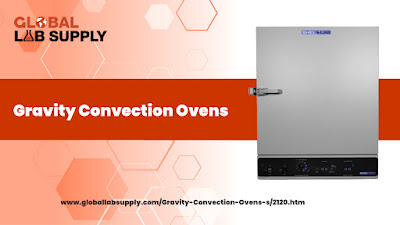Fume hoods are critical components in laboratory settings, providing a controlled environment for handling hazardous substances and ensuring the safety of laboratory personnel. When it comes to fume hoods, there are two main options to consider: portable fume hoods and fixed fume hoods. Global Lab Supply, a trusted provider of laboratory equipment, offers both types to meet the diverse needs of laboratories.
Portable Fume Hoods:
Portable fume hoods are flexible, movable units that can be
easily relocated within the laboratory. They offer several advantages:
Mobility: The primary advantage of portable fume hoods is their mobility. They can be easily moved to different locations or workstations within the lab, allowing for flexibility in laboratory setup and workflow.
Cost-Effective: Portable fume hoods are often more cost-effective than fixed fume hoods. They require less installation work and can be shared among multiple workstations, reducing the overall investment required.
Space Efficiency: Portable fume hoods are ideal for laboratories with limited space or those that need to optimize their available workspace. These hoods can be moved or stored when not in use, freeing up valuable laboratory space.
Fixed Fume Hoods:
Fixed fume hoods, also known as ducted fume hoods, are
permanently installed in specific locations within the laboratory. They offer
their own set of advantages:
Higher Performance: Fixed fume hoods are generally more powerful and provide better containment and ventilation compared to portable hoods. They are designed for specific work areas and can handle higher volumes of hazardous substances.
Superior Airflow Control: Fixed fume hoods offer precise airflow control, ensuring efficient capture and removal of hazardous fumes and vapors. The exhaust systems in fixed hoods are typically more advanced and can be tailored to meet specific safety requirements.
Enhanced Safety: Fixed fume hoods are designed to provide a dedicated workspace with optimum safety measures. They often come equipped with features like sash alarms, airflow monitors, and integrated fire suppression systems for heightened safety.
FAQs (Frequently Asked Questions):
Q1. How do portable fume hoods work?
Portable fume hoods utilize a fan and filtration system to
capture and filter hazardous fumes and particles. The fan draws air through the
hood, and the filters capture the contaminants before recirculating the clean
air back into the laboratory.
Q2. Can portable fume hoods provide the same level of protection as fixed hoods?
Portable fume hoods can provide adequate protection for most
laboratory applications involving low-to-moderate hazardous substances.
However, for high-risk or intensive operations, fixed fume hoods with dedicated
exhaust systems may offer better containment and ventilation.
Q3. Are fixed fume hoods more expensive than portable fume hoods?
Fixed fume hoods generally require higher initial investment
due to the installation of dedicated exhaust systems and complex airflow
controls. However, in the long run, the cost-effectiveness of fixed hoods can
be higher, especially for laboratories with intensive or long-term usage
requirements.
Q4. Can portable fume hoods be customized to fit specific needs?
Yes, Global Lab Supply offers customizable options for
portable fume hoods to meet specific needs. These options may include variable
airflow control, additional filters, or specialized work surfaces.
Q5. How do I decide between a portable and fixed fume hood for my lab?
The decision between portable and fixed fume hoods depends
on factors such as the nature of your work, the level of mobility required,
available space, and budget constraints. Consulting with experts from Global
Lab Supply can help assess your specific needs and determine the most suitable
option for your laboratory.
Conclusion:
Choosing the right type of fume hood is crucial for ensuring laboratory safety and efficiency. Portable fume hoods offer mobility, cost-effectiveness, and space efficiency, making them ideal for flexible laboratory setups and limited workspace. Fixed fume hoods provide higher performance, superior airflow control, and enhanced safety measures, making them suitable for laboratories with specific needs or high-risk operations. By considering factors such as mobility requirements, space availability, and the nature of your work, you can make an informed decision about whether a portable or fixed fume hood is the better choice for your lab. Global Lab Supply offers a wide range of options for both types of fume hoods and can provide expert guidance to help you select the most suitable solution for your laboratory's needs.



